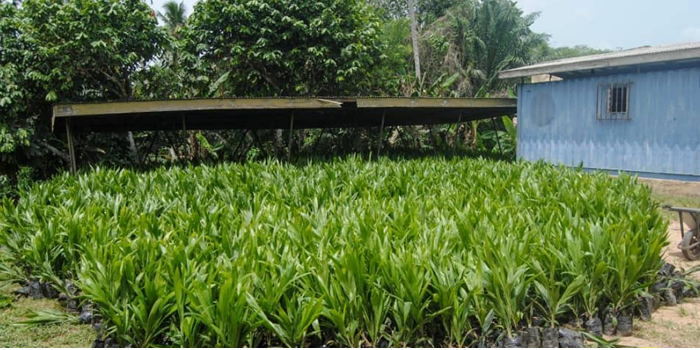

Relevant Data
Location & Size:
Ajumako-Enyan-Essiam (AEE) is one of the seveenteen [17] districts in the Central Region of Ghana. It is rural and covers an estimated land area of 541.3 square kilometres which is 5% of the Central Regional land area. Assin district forms the boundary on the West, the South by Mfantsiman district, on the north-west by Asikuma and to the east by Gomoa district.
There are nine area councils in Ajumako; they are Baa, Ajumako, Bisease, Mando, Abaasa, Breman Essiam, Denkyira, Etsii Sonkwaa and Enyan-Mam
The district is divided into four sub-districts for health delivery purposes, namely;-
• Ajumako
• Nkwantanum
• Bisease
• Enyan Abaasa
Ajumako is the district capital and is about 40 kilometres Northeast or the Cape Coast Municipality. Akans predominantly inhabit AEE district. There are however few migrant Ewes, Gas, Krobos and people from the northern sector of Ghana.
Topology & Drainage
The district lies within the dissected plateau region of Ghana, and its topography is undulating. There is dense drainage through several key rivers. Flooding is frequent on the land bordering Narkwa towards the borders with Gomoa.
The topography is undulating and the elevation ranges between 50 and 150 metres above mean sea level. The prominent highland is a ridge located in the north-western corner of the district and rises to about 180 metres above sea level.
The district is characterized by dense drainage with the key rivers, Amissah and Narkwa named after where they enter the sea although both rivers, are locally called Ochi. Flooding is frequent on the lands bordering Narkwa towards the borders with Gomoa. The heavy drainage system effect road construction and maintenance as bridges and culverts are required to cross the stream and rivers at several points.
Climate & Vegetation
Ghana has three vegetational zones, savannah in the north, semi-deciduous, rain forest in the middle belt and a narrow strip of low lying coastal plains in the South East. AEE is about 60 Kilometres off the coast of the Gulf Guinea and the forest vegetation is tropical and semi-deciduos.The district has vast stretches of secondary forest interlaced with farmlands.
The forest vegetation contains a number of economic species such as wawa (Triiplochiton scieroxylon), ofram (terminalia suprba), emire (Terminolic ivorensis) and mahogany(Khaya sp.) etc. Onyina (ceiba pentandra) is ubiquitous, whilst groves of bamboo are usually encountered in valley bottoms where moisture stress is minimal. But vast areas are fast declining to grassland as a result of the traditional methods of farming, the indiscriminate felling of trees and the absence of systematic re-afforestation programmes. This phenomenon accounts also for the reduction in soil fertility.
The climate is of the moist semi-equatorial type. The mean monthly temperature ranges from 26°C in the coolest month of August to about 30oC in hottest months March-April. The important single climatic element is rainfall, with double maxima. The two peaks occur in May-June, and September-October. Mean annual rainfall is between 120-150mm, most of which fall in the early months of the rainy season, March-April. December to February is the driest period.
Geology & Soil
The soil texture varies from zone to zone within the district and is mostly clayey in some parts, sandy in others and loamy in the rest.This has significant implications for the major farming patterns of the district.
Date Created : 11/29/2017 8:13:49 AM










 facebook
facebook
 twitter
twitter
 Youtube
Youtube
 +233 593 831 280
+233 593 831 280 0800 430 430
0800 430 430 GPS: GE-231-4383
GPS: GE-231-4383 info@ghanadistricts.com
info@ghanadistricts.com Box GP1044, Accra, Ghana
Box GP1044, Accra, Ghana